Best film cameras 2025: the finest classic and new analog cameras you can buy
We pick out the best film cameras you can buy right now

- Quick list
- New film cameras
- 1. Best compact
- 2. Best cheap
- 3. Best DIY
- 4. Best premium
- 5. Best multi-lens
- 6. Best medium format (new)
- Used film cameras
- 1. Best used SLR
- 2. Best retro SLR
- 3. Best beginner
- 4. Best pro SLR
- 5. Best medium format (used)
- 6. Best travel
- Also consider
- How to choose
- Meet the team
- How we test
My expert team has tested thousands of cameras, including the latest digital flagships. Yet I still think there’s something special about analog photography. If you’re drawn to the idea of shooting on film, this guide will help you get started. Based on first-hand experience, I’ve put together a list of the best film cameras you can buy in 2025.
From second-hand SLRs to modern 35mm models, there are several options if you want to pick up film photography today. If I had to pick one film camera to recommend, it would be the Pentax 17. This plastic point-and-shoot combines a sharp lens with a lovely viewfinder, making analog photography fun and accessible. That said, there are cheaper new options available, such as the Kodak Ektar H35.
Whatever kind of film camera you’re looking for, I’m confident you’ll find something suitable below. I’ve divided my round-up into new and second-hand options, with options for every budget. Each camera has earned its place based on real-world testing, so you can be confident in my recommendations.
Why you can trust TechRadar's choices
Every film camera featured in this guide has been evaluated by my dedicated reviews team, drawing on decades of experience with both analog and digital shooting tools.
TechRadar’s testing process puts each camera through a series of real-world shooting scenarios, to get a genuine picture of its performance in the kind of conditions most users will encounter. That means assessing a cameras’s build and handling in the field, with an eye on usability for different skill levels. Naturally, those tests also cover image quality in different lighting conditions.
Once I have a comprehensive view of a camera’s performance, either from my own personal experience or the feedback of my expert team, I compare it to similar models in its price category and user class. Whether you’re buying a new film camera or a second-hand SLR, every pick in this guide reflects its proven performance in actual practical use.
Quick list
Use the round-up below for an instant summary of the best film cameras in 2025 – both new and second-hand. When you find one that ticks the right boxes, you can use the links beneath each entry to jump down to our full write-up.
New film cameras
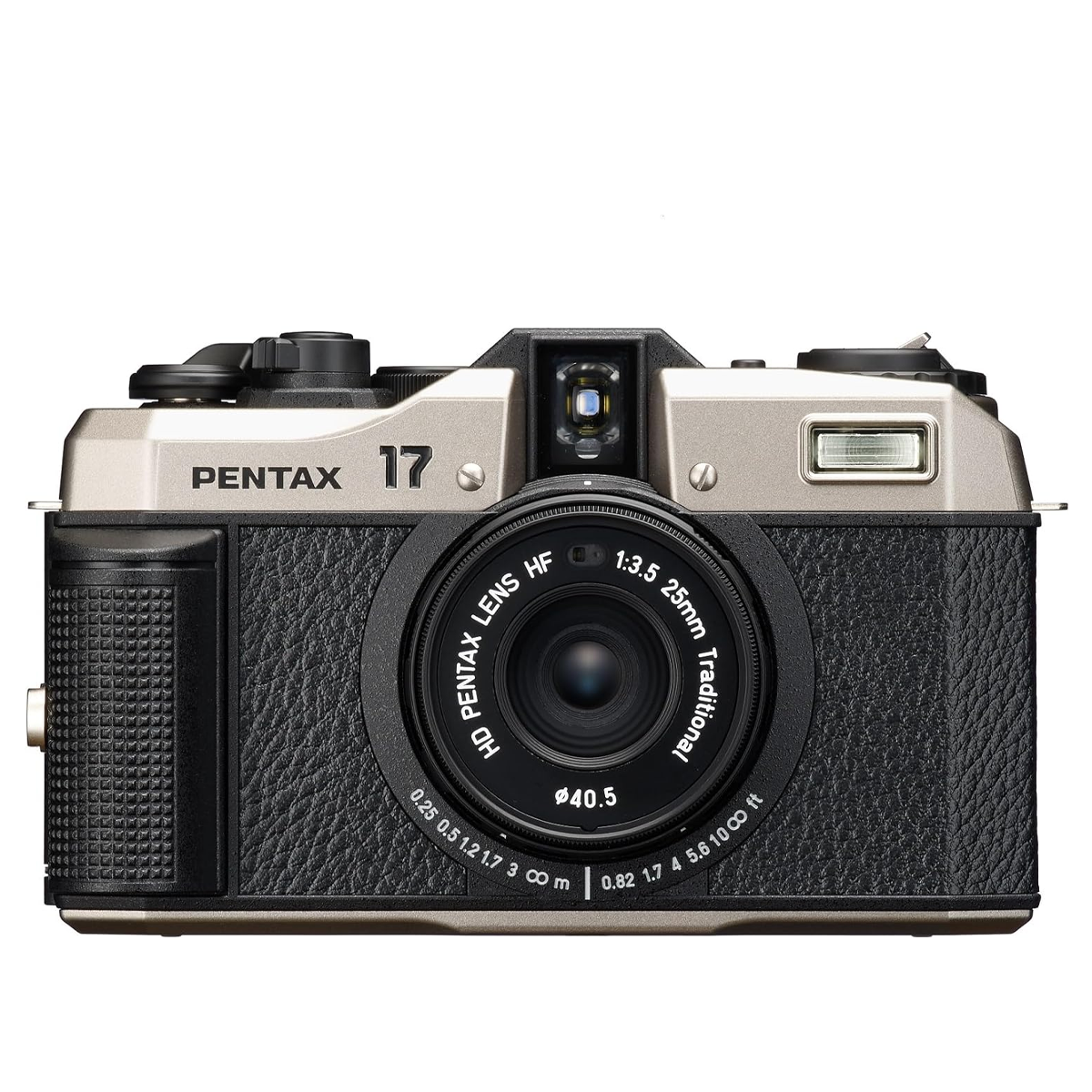
The best compact film camera
A new half-frame film camera that’s packed with vintage charm, this is the ideal analog model for the Instagram generation.

The best cheap film camera
Cheap and simple, the Ektar H35 shoots half-frame photos with point-and-shoot simplicity, making film photography easy.

The best DIY film camera
A self-build SLR with plastic parts, the Konstruktor F is an affordable way to make your own film camera and shoot with it.
Load the next 3 products...

The best premium film camera
With superlative build quality and an eye-watering price tag, the Leica MP is a stunning film camera that’s premium in every way.

The best multi-lens film camera
A clever, experimental camera with four lenses and a tiny body, the Alfie Tych+ is a very cool tool for analog creativity.
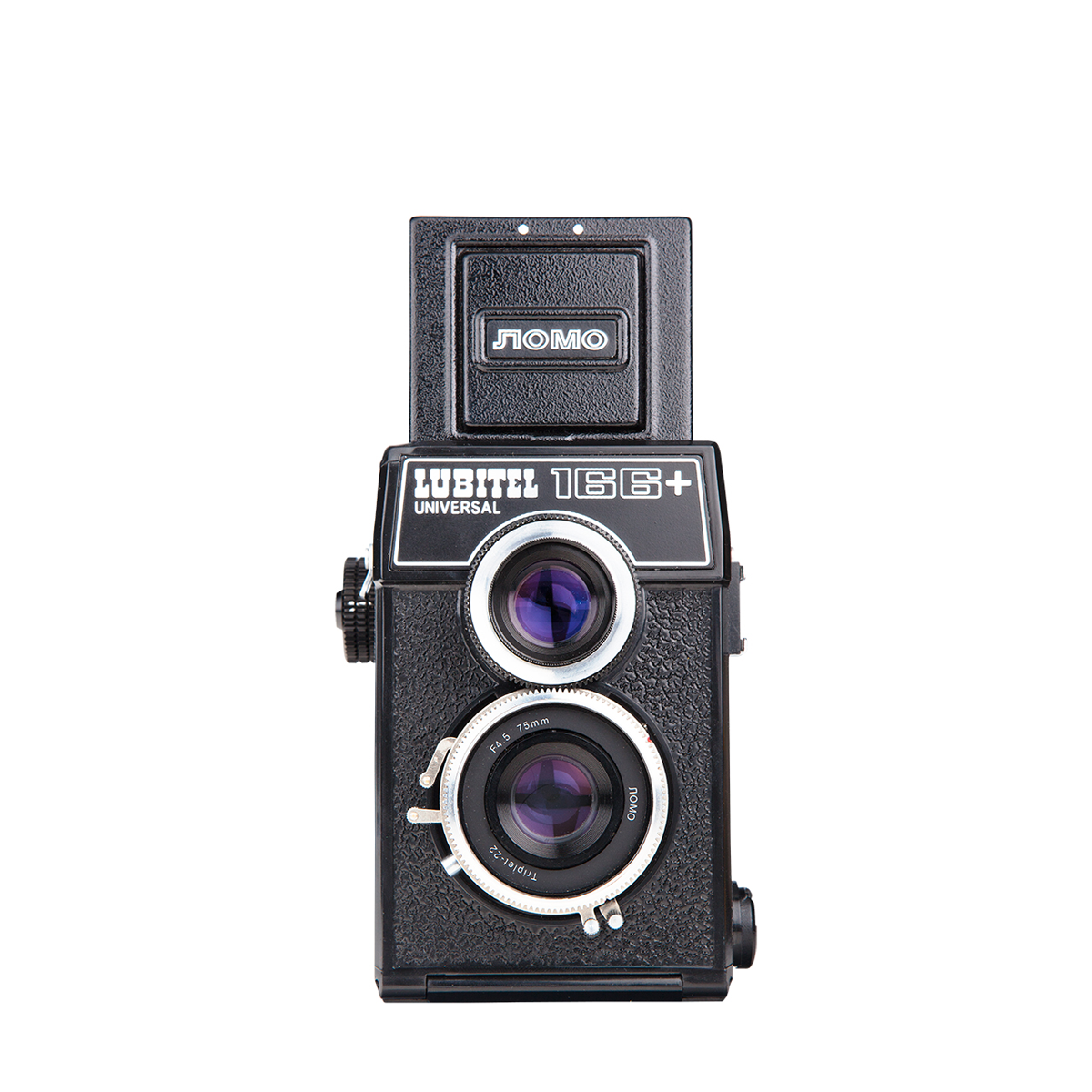
The best medium format film camera
A modern reimagining of the medium format, complete with a top viewfinder, the 166+ makes big prints accessible to beginners.
Used film cameras
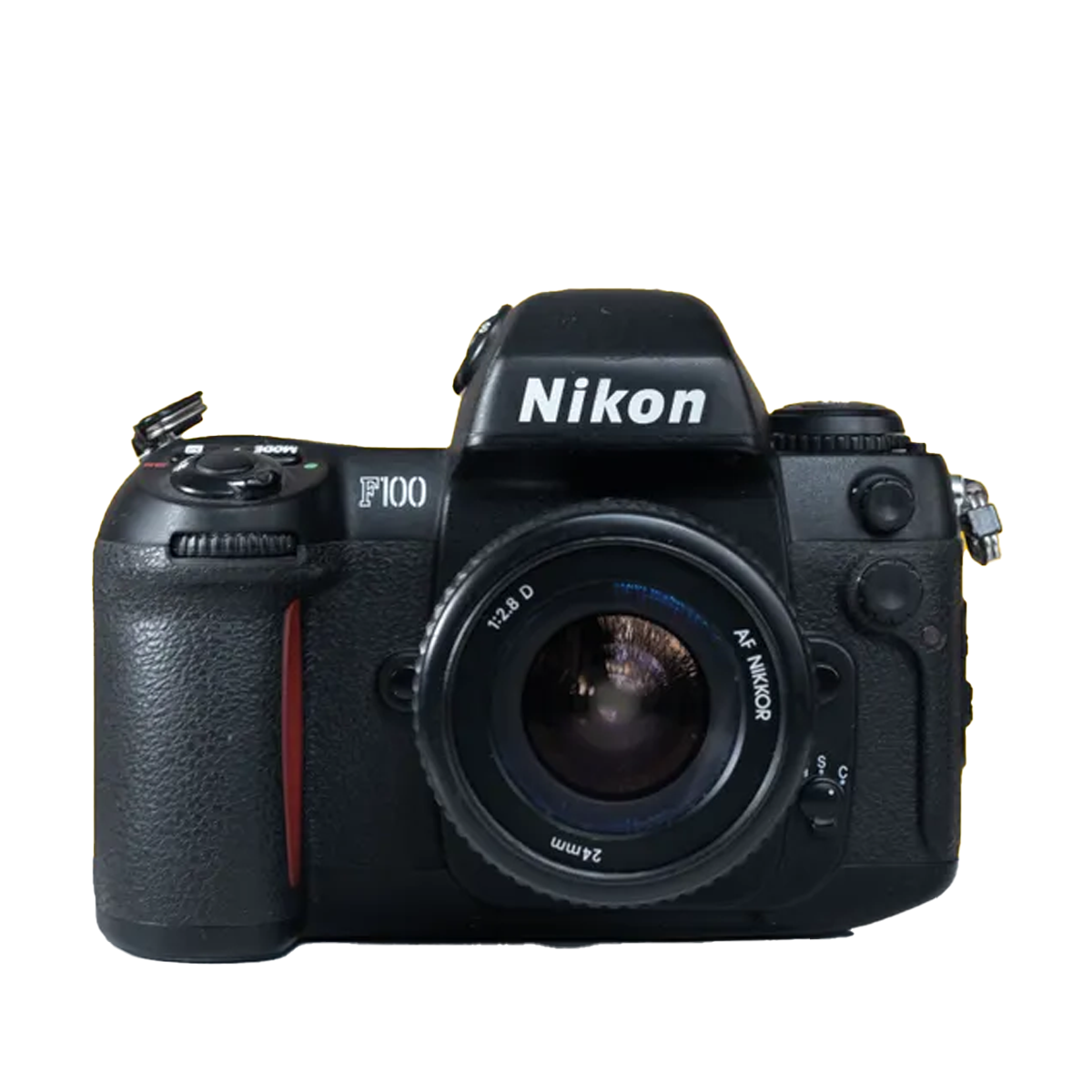
The best second-hand SLR
The best SLR from before things went digital, the F100 is a versatile, well-built and yet relatively lightweight option.

The best retro SLR camera
A bestseller in its day, the Canon AE-1 is a plastic-bodied film camera that does most of the hard work automatically.

The best used film camera for beginners
A simple, foolproof camera that’s perfect for students, the K1000 is a fully mechanical SLR that majors on accessibility.
Load the next 3 products...

The best second-hand pro SLR
One of the last pro SLRs made by Nikon, the F5 focuses fast, handles a lot like a modern DSLR and is a real joy to shoot with.

The best used medium format camera
A medium format rangefinder with a few design quirks, the GW690III produces pin-sharp results and large 6x9 negatives.

The best used travel camera
A simple travel camera from the Sixties, the Olympus Trip 35’s fast f/2.8 aperture make it a great choice for a range of conditions.

Tim is TechRadar’s Cameras Editor. With more than 15 years’ experience as a photographer and technology journalist, he’s been lucky enough to shoot with a whole range of cameras – including many of the best film cameras. He’s also an enthusiast at heart, with a deeply technical knowledge of what ingredients make a good camera. Tim notes, “film photography has never been more fashionable: from the retro aesthetic to the developing process, old-school is cool when it comes to analog cameras. The launch of new mechanical cameras like the Pentax 17 show that manufacturers are aware of the demand, too.”
The best film cameras in 2025
Why you can trust TechRadar
Below you'll find full write-ups for each of the best film cameras in our list. We've tested each one extensively, so you can be sure that our recommendations can be trusted.
The best new film cameras
The film cameras listed in this section can all be bought new in 2025.
The best compact film camera





Specifications
Reasons to buy
Reasons to avoid
Pentax 17 sample images





Retro is all the rage and Pentax has read the room: the 17 is its first new film camera in decades. An analog compact for the smartphone generation, it majors on vintage charm. In my review, I praised its optical viewfinder, as well as its wonderfully tactile film crank, complete with audible feedback when you wind film forward. Its proportions make it an easy camera to travel with, while its half-frame format means you maximise your stills count (and shoot Insta-ready vertical prints).
Based on my tests, I do think its plastic body and mixed textures don’t quite match up with the retro aesthetic and high price tag; the Pentax 17 doesn’t feel particularly tough. On the whole, though, this is a really lovely camera to shoot with. Its clever viewfinder, point-and-shoot setup and sharp lens make it easy to capture lovely analog snaps with good levels of detail. A lower cost would make this an unequivocal recommendation, but I still think Pentax has still knocked it out of the park.
Read our in-depth Pentax 17 review
The best cheap film camera





Specifications
Reasons to buy
Reasons to avoid
Cheap, neat and simple, the Kodak Ektar H35 is a basic half-frame film camera that anyone can use. With a one-button interface and tidy dimensions, it’s the most convenient film camera listed here. It’s no surprise that the body is all plastic, given the price, but we still think the H35’s two-tone design looks nice enough. Controls are limited to a shutter button, a film advance on the back and a rewind crank underneath – you won’t find any manual controls or creative exposure modes here.
With fixed focus and plastic optics, my reviewer found that picture quality is similar to what you’d get from a disposable film camera. Details aren’t particularly crisp and the Ektar H35 struggles in scenes with strong backlighting. One AAA battery powers the optional flash, which you’ll need when shooting in anything other than daylight. It’s activated by twisting the lens collar – and if you forget to turn it off, the battery will drain. If you want an affordable first film camera, I think the Kodak Ektar H35 is a great place to start.
- Read our in-depth Kodak H35 Ektar review
The best DIY film camera
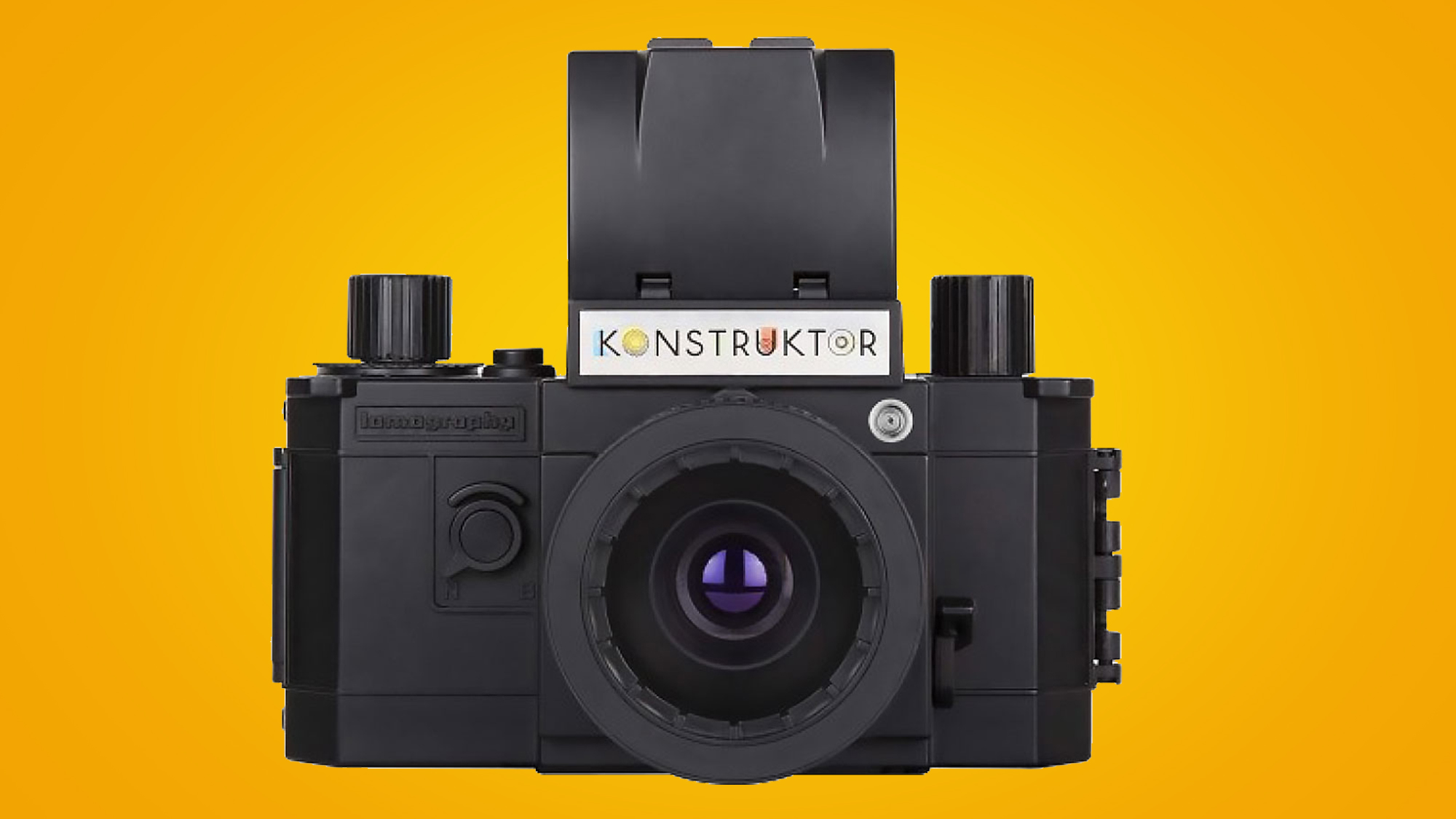
3. Lomography Konstruktor F
Specifications
Reasons to buy
Reasons to avoid
If you like the idea of a DIY film camera project, we think the Konstruktor F is a great choice. A build-it-yourself SLR from Lomography, it’s also an incredibly affordable route into analog photography. There’s plenty of satisfaction to be found shooting with a camera that you’ve made yourself. Plus it can be expanded with the Konstruktor Flash Accessory Kit, which attaches directly to the camera’s PC socket.
In testing, we found that the TLR viewfinder on top is ideal for waist-level shooting, allowing you to frame stills inconspicuously for street photography. The fixed shutter speed and aperture do limit creative flexibility, while the plastic build doesn’t feel the most robust. All the same, if you’re happy to assemble your own film camera, the Konstruktor F offers a lot of fun in a small, inexpensive package. If you’d prefer to leave the assembly to someone else, Lomography also sells a pre-built version with a clear body.
The best premium film camera




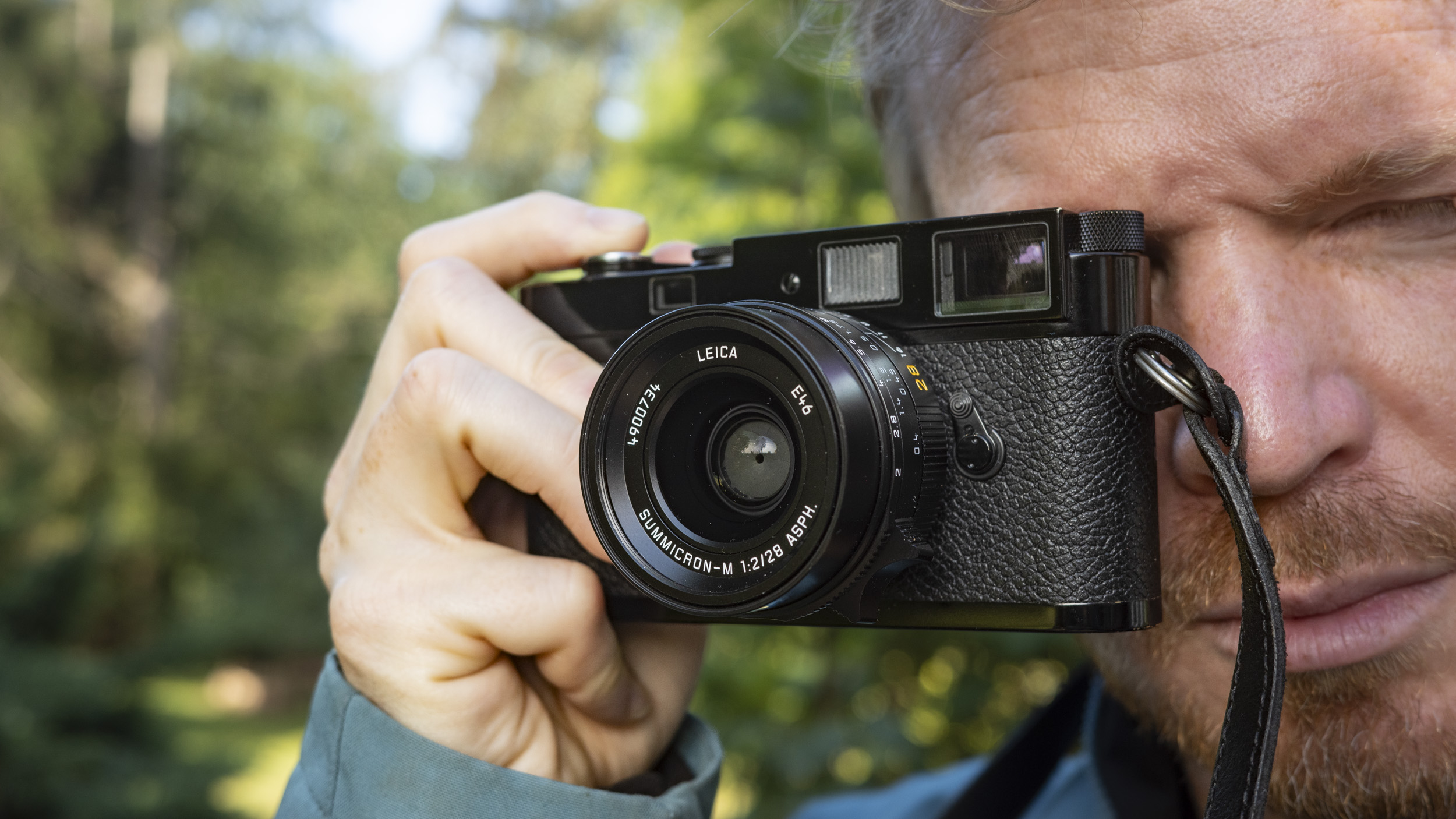
Specifications
Reasons to buy
Reasons to avoid
Leica MP sample images
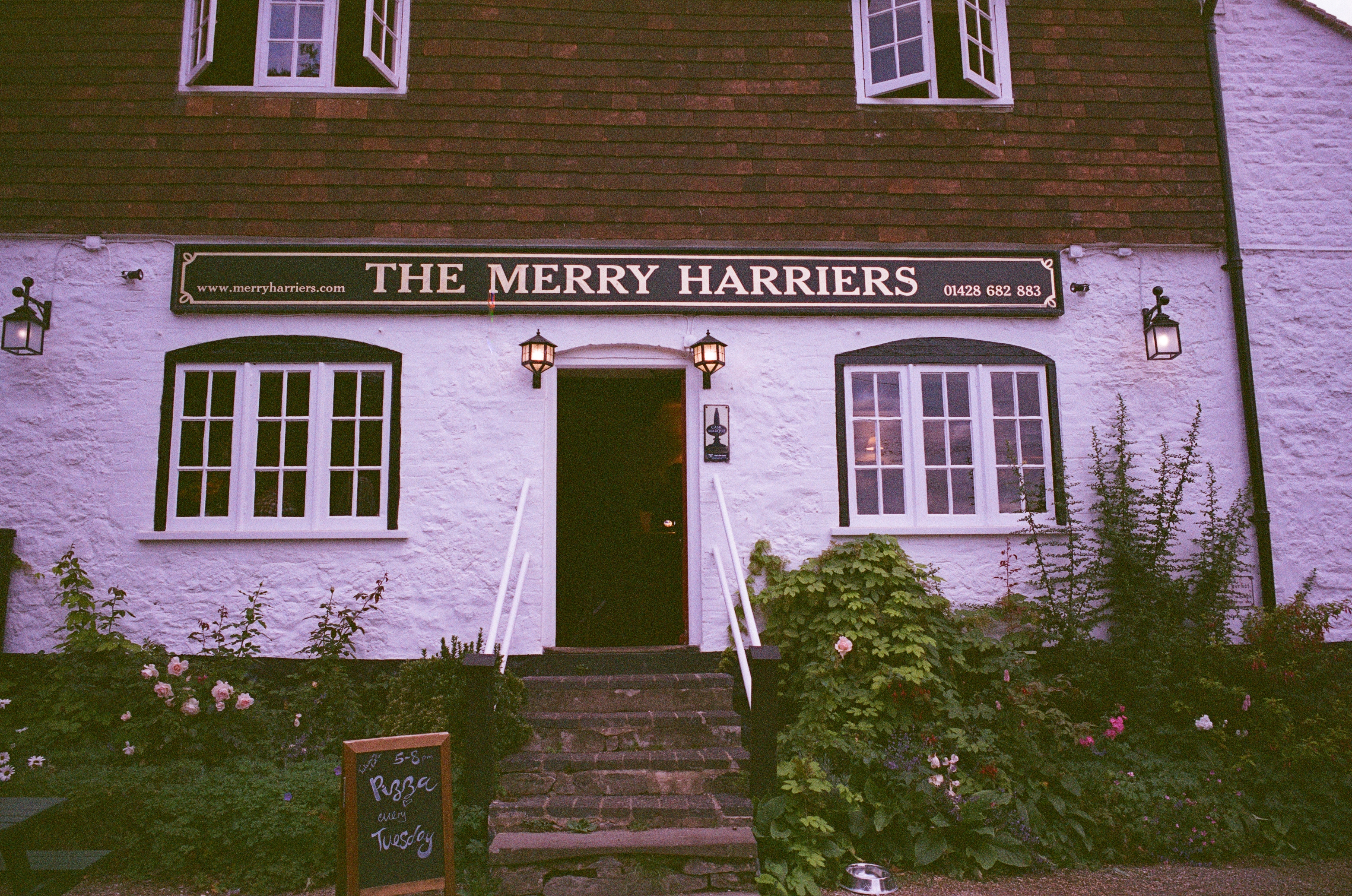

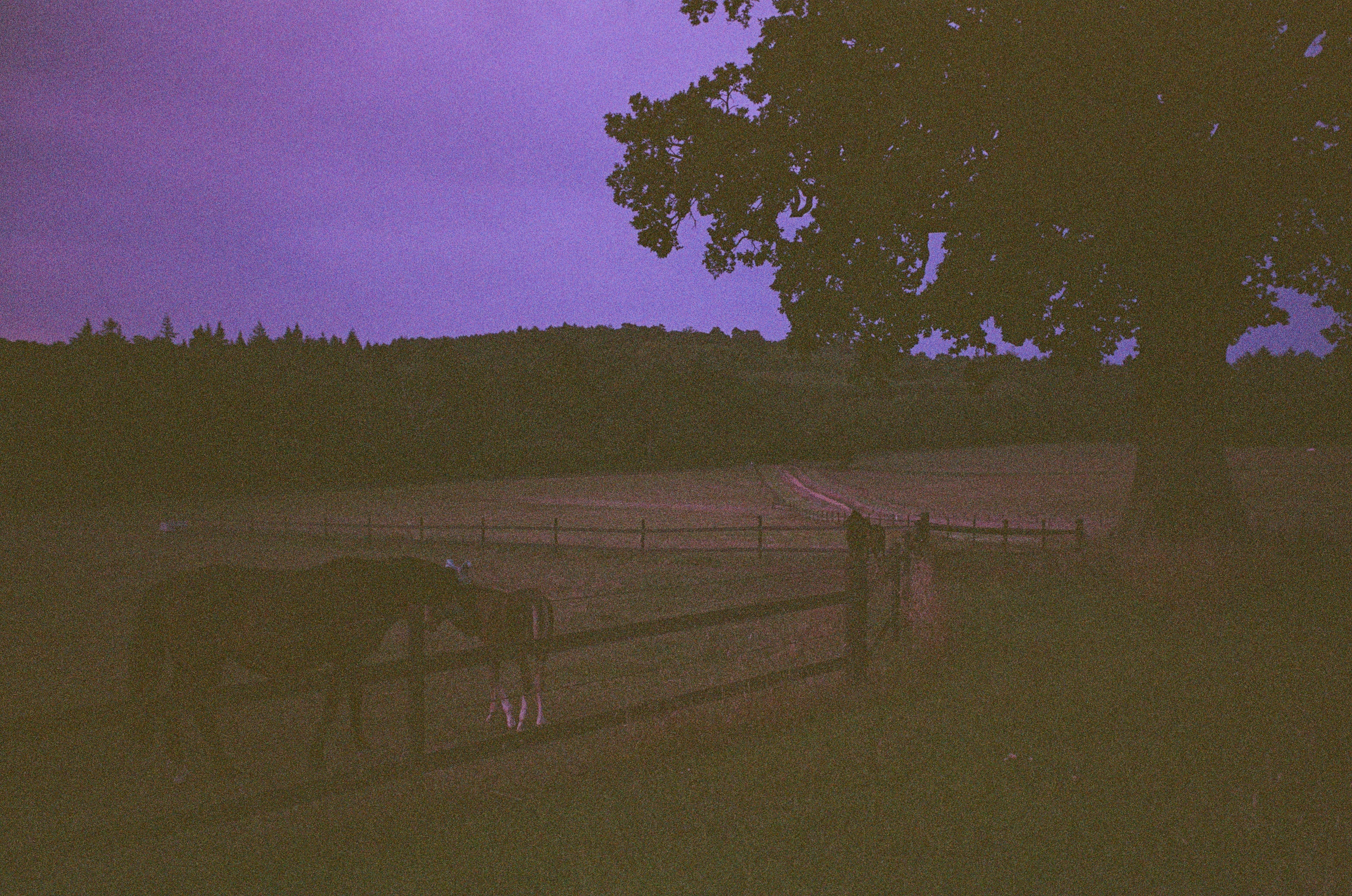


A full-metal film camera with a premium build and a price tag to match, the MP bears all the hallmarks of Leica build quality. Released in 2003, it’s still available new today, and I think it’s the best film camera you can buy if money is no object. It’s also one that gives you a pure analog shooting experience: because it’s a fully manual rangefinder camera, you’ll need to master the exposure triangle to get the best out of it.
In testing, I found that this can make shooting with the Leica MP frustrating at times, especially when you’re trying to nail the focus at a wide aperture, where there’s little margin for error. But I also felt that using the MP was “ultimately a wonderful creative process”. You’ll pay handsomely for the privilege of owning one – together with matching M-mount lenses – but if you want a reliably smooth and uniquely absorbing film camera, there’s nothing quite like the Leica MP in 2025.
- Read our in-depth Leica MP review
The best multi-lens film camera





Specifications
Reasons to buy
Reasons to avoid
Alfie Cameras TYCH+ sample images





A tiny half-frame camera with four lenses on a rotating plate, the Alfie TYCH+ packs a lot of creativity into a compact, cleverly designed body. Its half-frame setup means you get twice as many exposures from a standard roll of 35mm film, while the quartet of lenses invites you to experiment with different shooting styles – from an f/156 pinhole to a 33.3mm (50mm equivalent) f/8 rapid rectilinear lens. The result is a camera that can do a whole lot, despite pretty much fitting in a pocket.
There are a few caveats to consider. It’s not a cheap camera, especially if you only plan on using it for occasional fun. And while you can get 70 stills from a single roll, there’s no escaping the cost of film and processing. You’ll also need to master switching the exposure mode to match the lens you’re using, and remember to advance the film (unless you’re aiming for a double exposure). But with reliable metering, this is an inventive tool for trying a range of analog techniques.
Read our in-depth Alfie TYCH+ review
The best medium format film camera
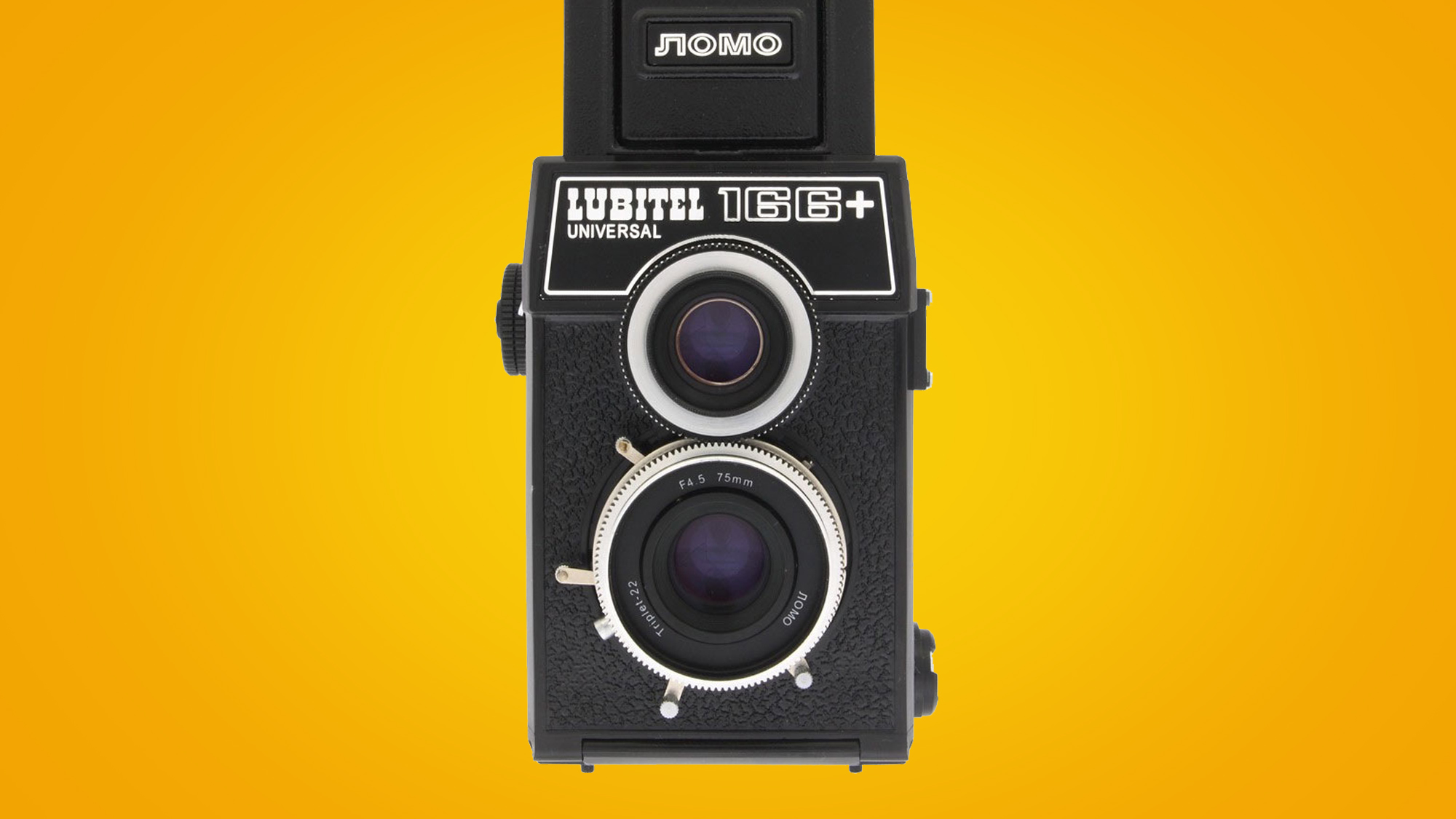
6. Lomography Lubitel 166+
Specifications
Reasons to buy
Reasons to avoid
Based on the Russian camera of the same name, the Lomo Lubitel 166+ takes its design style from twin-lens reflex (TLR) cameras of the 1940s and 50s. That means it’s a big camera, but also one with classic looks. Lubitel, which in Russian means 'amateur', is aimed at exactly that: those who want to get into medium format without the extravagant expense that often puts beginners off. Helpfully, you can also shoot on standard film using the Lubikin 35mm kit that ships with the Lubitel.
In our tests, we found focusing straightforward thanks to the ground-glass focusing screen, which helps you dial in a sharp image on the top viewfinder. The fixed 75mm lens focuses relatively close with a minimum focusing distance of 0.8m up to infinity, which should cover almost all types of photos aside from macro work. It proved sharp in our review, too. A simple frame advance knob also allows for easy multiple exposure shots that produce wonderful, creative effects.
The best used film cameras
The film cameras listed in this section can all be bought second-hand in 2025.
The best used film SLR

1. Nikon F100
Specifications
Reasons to buy
Reasons to avoid
One of the best things about the Nikon F100 is that it’s suitable for a range of experience levels. Whether you’re a beginner or an intermediate photographer, it’s straightforward to get to grips with the comprehensive PASM (Program, Aperture Priority, Shutter Priority, Manual) modes. It also offers the classic SLR handling and ergonomics, while a body made of mostly magnesium means the F100 is rugged yet lightweight – hitting the scales at just 785g, in part because some of the camera’s back is plastic.
Autofocus is expertly controlled through the use of the Multi-CAM1300 AF system, which gives a wide AF coverage with five separate points. It also benefits from 10-segment 3D matrix metering. At the time of its release in 1999, the pairing made for a powerful system. Today, it means you can shoot fast while maintaining sharpness. The F100 can also shoot at 4.5 frames per second, or 5 AF FPS with the MB-15 battery grip.
The best second-hand retro SLR
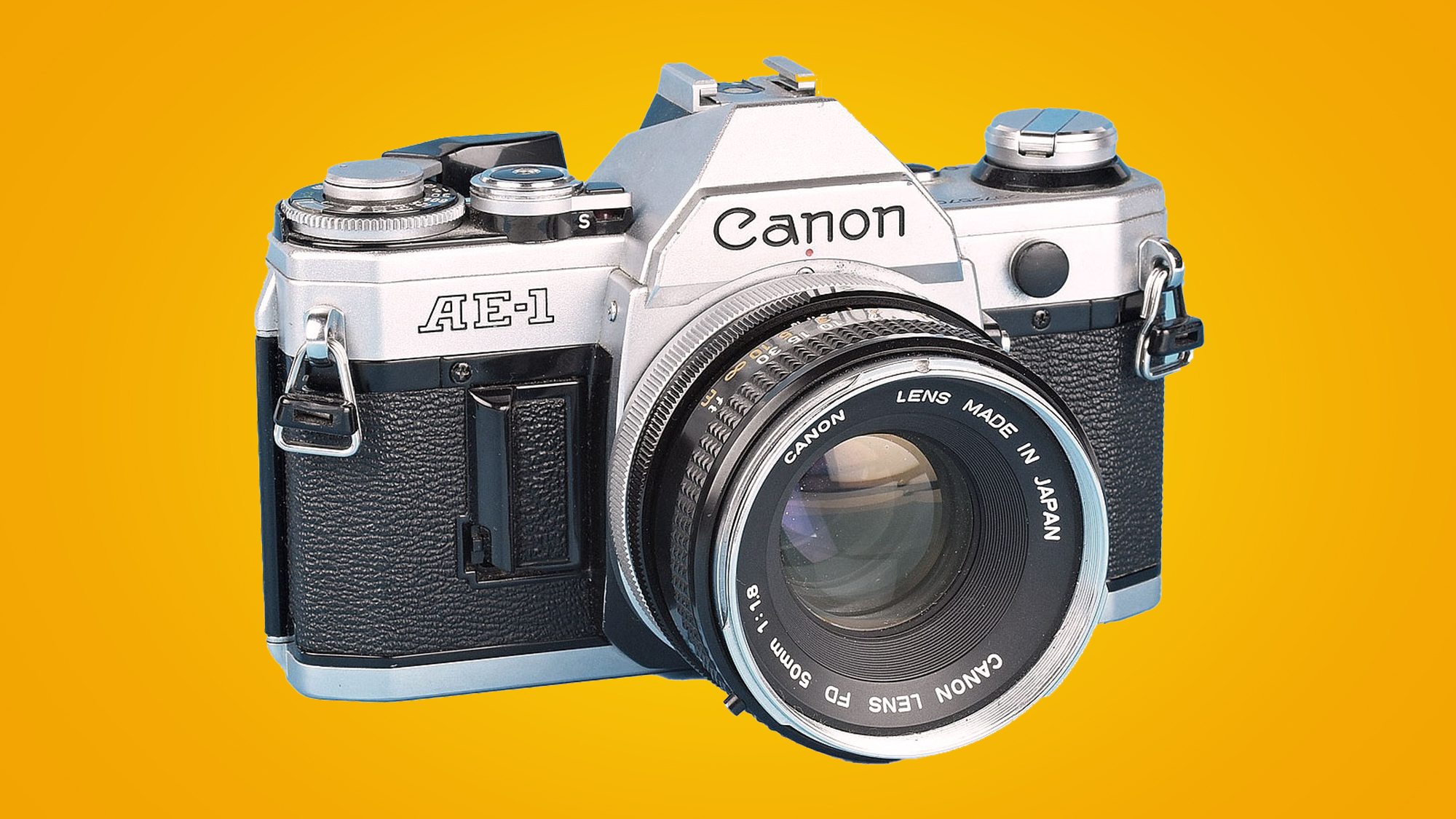
2. Canon AE-1
Specifications
Reasons to buy
Reasons to avoid
Arguably the most hyped camera of the 1970s, Canon sold a million units of the AE-1 back in the day. Its tightly packaged plastic body marked a shift away from heavy, fully mechanical cameras into a lighter, more portable future. Its plastic structure and cloth shutter also meant Canon could keep the price low, making it appealing to beginners. The result is a camera that feels cheap in the hand during, yet its vintage looks mean the AE-1 continues to enjoy high demand today.
The AE-1 was the first production SLR to feature a shutter priority mode. It does most of the work for you, with a centre-weighted light meter for judging exposures. There is a manual mode, but the AE-1 works best in automatic. Provided you find one in good condition, the electronic shutter release has a lovely feel and sound (Apple reportedly sampled it for the iPhone’s camera shutter effect). Out of the box, it’s compatible with FD mount lenses, but third-party adapters are available that let you attach EF-mount glass.
The best second-hand film camera for beginners

3. Pentax K1000
Specifications
Reasons to buy
Reasons to avoid
Known as a fantastic first film camera for photography students, the Pentax K1000 is one of the cheaper 35mm SLRs you can pick up second hand. Yet it’s also one of the most usable cameras on this list. Stripped back and simple, the K1000 has just three controls: focus, aperture and shutter speed. In my view, this no-frills approach is all part of the appeal, making it an accessible camera for learners to pick up and start shooting with.
There are no electronics to go wrong with the K1000: its battery exists only to power the light meter. Otherwise, we found that its fully mechanical metal setup works without issue, even four decades after the K1000 first went on sale. On the top just behind the pentaprism is a hot shoe for mounting flashes, plus shutter speed and ISO (ASA) alteration on the top dial. The viewfinder also has a 0.88x magnification, which in our tests gave a nice unrestricted view of the scene to help aid your composition.
The best second-hand pro film camera
4. Nikon F5
Specifications
A former flagship from 1996, the Nikon F5 was one of the company’s final professional film SLRs. Today, it’s your best bet if you want a truly advanced film SLR. You get aperture and shutter priority modes, support for fully manual lenses, plus fast and accurate autofocus. The F5 can also automatically read your film speed, so you don’t need to dial in ISO settings manually.
With all these advanced professional features, as well as the professional body design, you do sacrifice some portability. The F5 is built like a tank, meaning it’s a pretty weighty camera that wouldn't necessarily be a top choice for travel. Yet it also handles like most of Nikon’s modern professional DSLR cameras, with a deep grip, well-placed dials and bright viewfinder. If you want a serious film SLR that’s a pleasure to shoot with, I reckon you can’t go far wrong with the Nikon F5.
The best used medium-format film camera
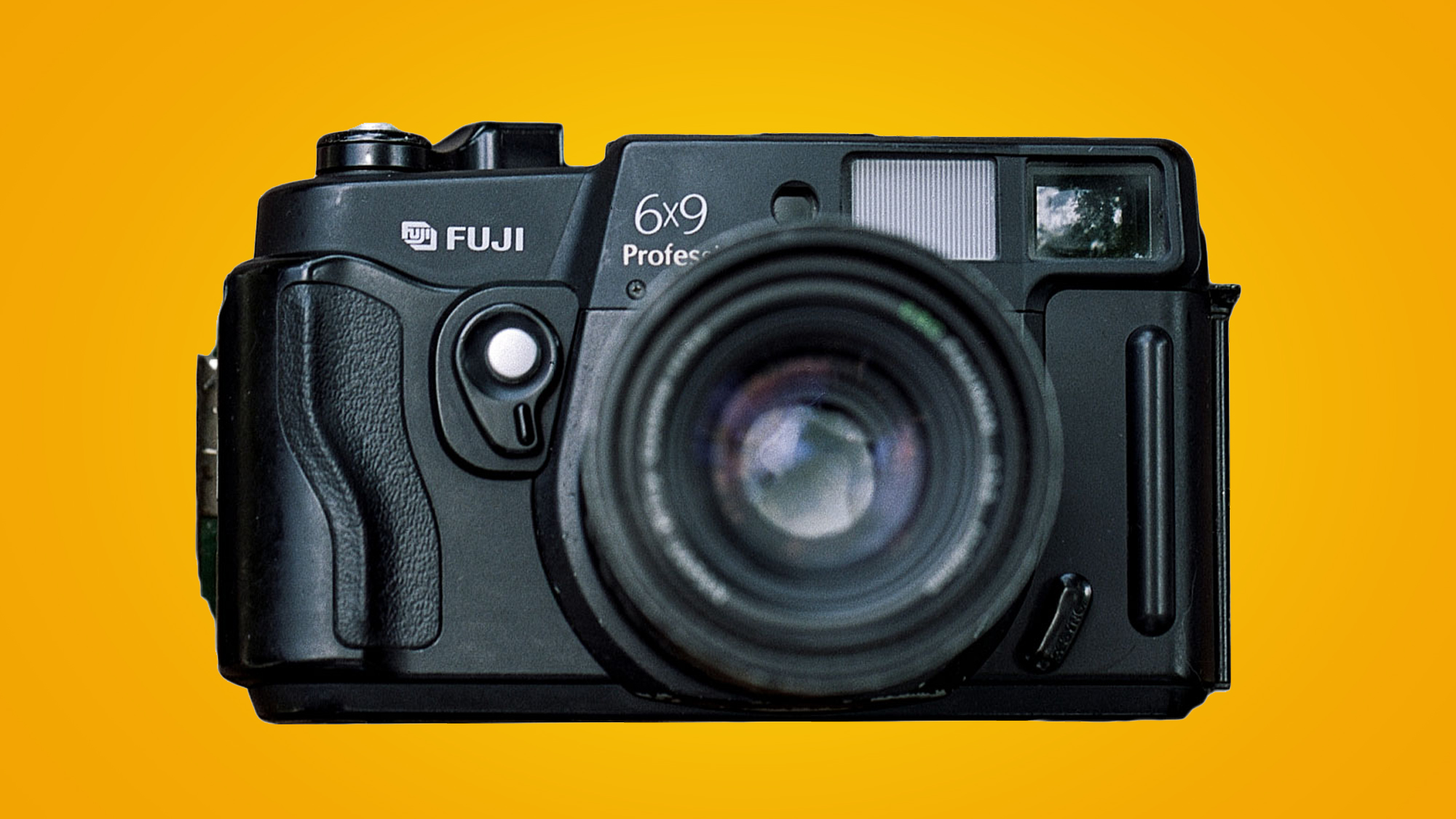
5. Fuji GW690III
Specifications
Reasons to buy
Reasons to avoid
Although it’s a medium format camera, the Fuji GW690III is relatively portable rangefinder, thanks in part to an all-plastic casing that keeps weight down to 1,460g. There are some handling quirks, including a shutter speed selector that’s hidden next to the aperture control ring, behind a pull-out mechanism on the lens. There’s also a shutter actuation counter on the underside of the body, which is known for affirming your exposures with a loud click.
One of the biggest draws is the huge 6x9 negatives the GW690III produces. That aspect ratio is almost identical to 35mm film, which means composition remains largely familiar despite the size increase. Results are fantastic, thanks to a fixed Fujinon 90mm f/3.5 lens that’s pin-sharp down to the minimum focusing distance of one meter. And because of the lens' metallic built-in hood, it also counteracts flare nicely.
The best second-hand travel film camera

6. Olympus Trip 35
Specifications
Reasons to buy
Reasons to avoid
The Trip 35 arrived in 1967 and was destined to become a popular, classic travel camera. A compact that was easy to slip into your pocket, it captured great, sharp photos thanks to its fixed 40mm f/2.8 lens. Combined with some suitably fast film, that maximum aperture makes this camera ideal for any kind of snapping, whether you're outside, indoors, or in low light conditions. To help, the ISO (or ASA as it was then known) was designed to be kept below 400 using the ISO selector on the lens.
For true photophiles, it might lack a little in features, with aperture and shutter speed being automatic. It is possible to manually adjust the aperture should you require it, but it is restricted to just four different distance focus options from close portrait shots to distant mountain tops. Still, for those new to film photography or looking for a fun travel camera, I think this camera's simplicity and minimal settings are ideal.
Also consider

Not every film camera can make the cut, but there are some additional options that deserve a brief mention here – either because they do something unique or because they represent great value.
Lomography Diana F+: A feature-packed, budget-friendly film camera that delivers lovely, lo-fi retro images for not much money. Its plastic body feels cheap, but it’s a great new choice for beginners.
Ilford Obscura Pinhole: If you’d like to experiment with pinhole photography, this is a simple film camera that produces remarkably sharp results.
Lomography Sprocket Rocket: A fun camera which exposes film all the way up past the sprocket holes. You can also wind the film forwards and back, for ultra-wide panoramas or multiple exposures.
Lomography Lomatic 110: A brand-new option for 2024 that’s super-compact and incredibly easy to use. It uses 110 film, which is half the size of 35mm rolls. The drawback is a drop in quality and an added cost when developing.
Polaroid SX-70: If you’re tempted by one of the best instant cameras but want something retro, try the world’s first instant camera – a model which still has a cult following
Olympus OM-1: With its big, bright optical viewfinder, we highly rate the OM-1 as a second-hand film camera that’s fully mechanical.
How to choose the best film camera

How to choose the best film camera
If you’ve decided to take the leap into analog photography, you’re already halfway towards finding a film camera. Then comes a crucial question: new or second-hand? As you’ll see from our list above, you can buy both brand-new and used film cameras in 2025. Each category has different considerations.
With a used camera, you’re getting a genuine, vintage shooting experience. Even with a relatively recent film camera like the Nikon F100, you’re still using a camera that’s 25 years old. Shop around and you can find good deals on used film cameras, although the analog trend means that popular models, such as the Canon AE-1, can change hands at inflated prices now.
The flip-side with second-hand film cameras is that you’ll need to do your homework before buying. There are many reputable retailers that grade and sell used film cameras online. But even with a film camera in good condition, decades of use increases the risk of something going wrong, especially with all of the mechanical components inside an SLR – and particularly if you’re looking for an older camera.
Your alternative is to look at one of the new breed of contemporary film cameras, like the Pentax 17. These give you the analog experience and, in many cases, the feel of a vintage camera, but from something made and sold new in 2025. For some people, this doesn’t offer the same authenticity as an original film camera but, in theory, it means a lower likelihood of mechanical breakdown. Several of these cameras are also more creative than traditional cameras. Take a look at the Lomography Sprocket Rocket or the multi-lens Alfie Tych+.
Whether you buy used or new, your other consideration should be complexity. Regardless of the medium, you should buy a camera suited to your skill level. So if you’re completely new to photography, you might want to consider a point-and-shoot film camera that takes care of most or all of the settings automatically, such as the Pentax 17. This should reduce the number of wasted frames and, therefore, keep the cost of refills low.
Then again, you might want to experiment with film photography, or have the experience to manage a manual camera. In which case, it’s worth considering a film camera that gives you more control over shooting modes and settings. An SLR like the Nikon F100, for example.

Which film should I use with an analog camera?
Different analog cameras take different film rolls. The most common size is 35mm, although there are other formats out there – including 120 medium format film (as used by the Lomography Lubitel 166+) and 110 film (as used by the Lomatic 110).
When selecting a 35mm film type, there are a few factors to consider. One is price, another is availability: both of these can vary wildly in 2025, depending on what films are still in production and how much is in stock globally.
Another aspect is a film’s ISO rating. Unlike a modern digital camera, light sensitivity in a film camera is impacted by the analog medium itself. As a rule of thumb, you want an ISO 100 film for shooting in sunlight, or an ISO 800 film for lower lighting. ISO 400 is often considered the best middle ground for a range of conditions. It’s worth noting that it’s possible to manually manage exposure by stopping down the aperture, or by compensating with the ISO dial.
Because of the chemicals involved in creating film, different types have different characteristics – and certain films are revered among analog enthusiasts. Kodak Tri-X 400, for example, is known for its gritty black-and-white look, while Fujifilm Pro 400H is favored for its soft colors and lovely skin tones, making it a useful choice for portrait photography.
Meet the team
Our team of film camera reviewers are the best in the business, with uncountable years of camera experience and testing of the best instant cameras from Polaroid, Fujifilm and others.

Tim is TechRadar's Cameras Editor and has been cutting his teeth in the photo and video industry for almost 20 years. His first instant camera was the legendary Polaroid SX-70 from 1972.

Beth kicked off her journalistic career writing for Digital Camera World and has since moved over to our sister site, Creative Bloq, where she covers all things tech, gaming, photography, and 3D printing.
Tom is now the Deputy Editor at Stuff magazine, following more than a decade on staff at leading titles including Autocar and Expert Reviews.
How we test the best film cameras

☑️ 100s of cameras reviewed
☑️ 15 years of product testing
☑️ Over 16,000 products reviewed in total
☑️ Nearly 200,000 hours testing tech
On the whole, we test film cameras in the same way as we test all cameras: comprehensively and in the real world. That means taking them out and using them in the kind of scenarios you’re likely to encounter as a photographer. We’ll think about how they feel and handle, how well they’re built and how easy they are to use – from their viewfinders to their focus rings.
Because of their mechanics, we do keep a few different things in mind for film cameras. We test how easy it is to load and advance film, as well as the accuracy of any built-in light meter and auto-exposure modes, to check that a camera can consistently produce usable results. We’ll also assess manual and, where relevant, autofocus performance.
Once we’ve finished shooting, we get all of the film developed to evaluate the overall image quality and optical performance. We look closely at sharpness, contrast and color reproduction in the resulting images, noting that quality can be impacted by the film used and the development process.

When we test second-hand cameras, it’s important to note that any flaws may be unique to that specific camera and what it’s been through – although we will compare any malfunctions we encounter with other reports and feedback from the analog photography community.
Finally, we take all of the above, together with our impression of any additional features, to form an overall view of how well a film camera has performed, whether it deserves to be recommended, and who it might be best for: beginners, hobbyists or those looking to experiment with film photography.
Sign up for breaking news, reviews, opinion, top tech deals, and more.

Tim is the Cameras editor at TechRadar. He has enjoyed more than 15 years in the photo video industry with most of those in the world of tech journalism. During his time as Deputy Technical Editor with Amateur Photographer, as a freelancer and consequently editor at Tech Radar, Tim has developed a deeply technical knowledge and practical experience with cameras, educating others through news, reviews and features. He’s also worked in video production for Studio 44 with clients including Canon, and volunteers his spare time to consult a non-profit, diverse stories team based in Nairobi. Tim is curious, a keen creative, avid footballer and runner, and moderate flat white drinker who has lived in Kenya and believes we have much to enjoy and learn from each other.
- Mark WilsonSenior news editor
- Jason Parnell-Brookes
- Chris Rowlands
